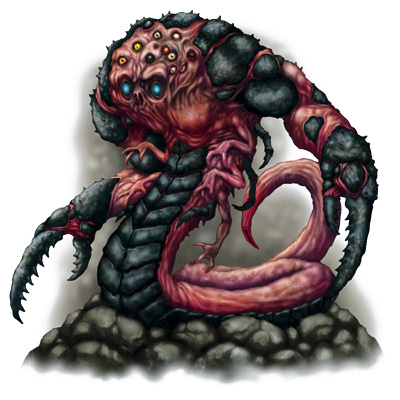Eberron by Kurieg
Introduction
Original SA post
Well I've had enough downtime from the bad stuff. Time to review something that I enjoy.
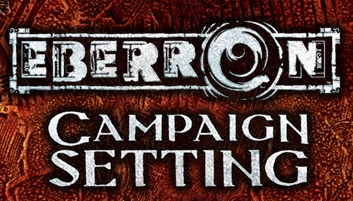
Eberron Campaign Setting
Introduction
Around the time that Dungeons and Dragons 3.5th edition was being developed, someone at WOTC realized that Forgotten Realms was no longer serving the role of 'gateway setting' that it once was. It rightly had it's fans in some of the more experienced players, and the Neverwinter Nights games probably helped drive some interest; but with the amount of backstory the setting had, and the very large amount of supplemental material available for it, starting players might be a little bit intimidated.
Thus began the 2002 Fantasy Setting Search, from over 11,000 entries, they narrowed it down to 3, one by Rich Burlew (of Order of the Stick fame), Philip Nathan Toomey (who I can't find anything on), and Keith Baker. They chose Keith Baker's setting and turned it into the book I'm reviewing today.
Whereas the other review is more of a general overview of the setting, I'm going to be covering the books themselves. Specifically the 3.5 edition books, if there was a big change in the 4th edition books, I’ll make a notation with this icon

The Tone of Eberron
The major thing that sets Eberron apart from other settings is that Eberron is a Pulp setting. It takes place in a post-war world on the continent of Khorvaire, where a single empire was shattered into many. Everything was designed with a cinematic flair in mind, and the art reflects this; lots of creatures, items, or vehicles have a distinct design or profile that is instantly recognizable and sticks with you, like the Elemental Airships.
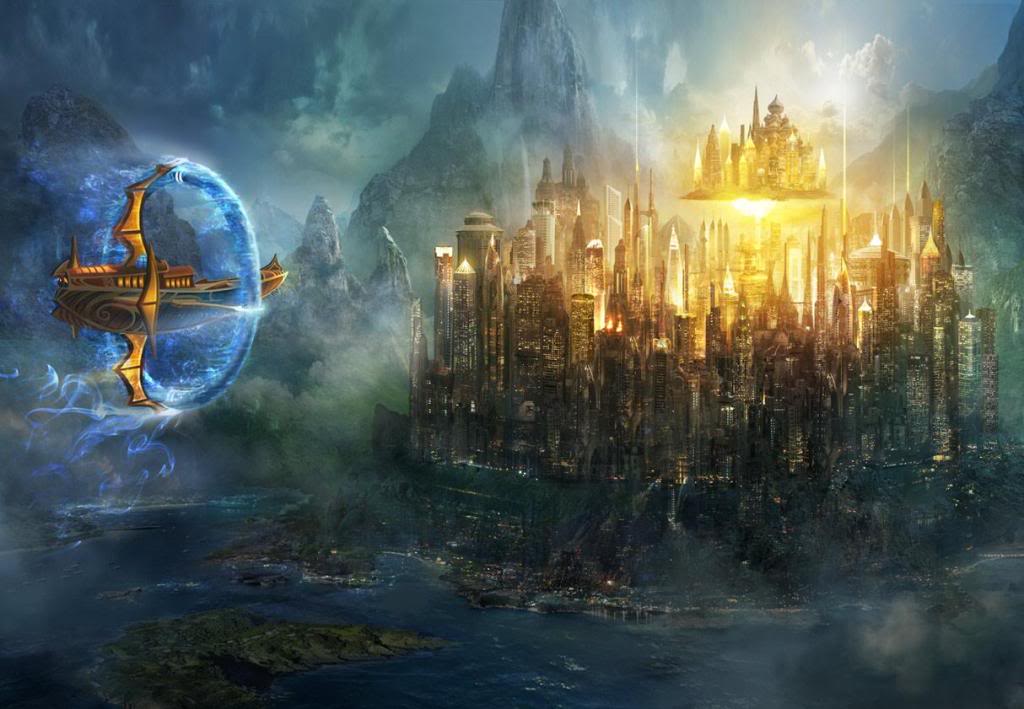
There are also lightning powered maglev trains.
That's another theme of Eberron, magic is everywhere. It's a part of everyday life for many of the people living in Eberron. Not in the sense that everyone can cast spells, but that cities have everburning torches used in street lamps. There's a telegraph service provided by magical sending stones. The aforementioned trains allow for shipment of goods across continents, the airships allow for exploration of
other
continents. And the vast majority is controlled by an aristocracy of merchant families with a monopoly due to dragonmarks, hereditary magic marks that manifest within certain racial lines.
As for that war that was mentioned. In setting it's referred to as the Last War. It happened when King Jarot, king of Galifar, died. According to tradition, his eldest child would ascend to the throne, and her children would assume control over the Five nations of the Empire as had happened when Jarot ascended to the throne. Unfortunately three of her four siblings didn't agree, either because they wanted to be on that throne, or they didn't want to lose the power that they had. The war lasted 102 years, and alliances shifted quite often over that time frame, and only ended when one nation was literally blasted out of existence. The remaining Twelve nations signed the Treaty of Thronehold, ending the war and spreading an unsteady Peace. Espionage and border skirmishes are still common though (and a fine place for Player Characters to find themselves).
Ten Things
(Keith Baker Thinks)
You Need to Know
1. If it exists in D&D, then it has a place in Eberron
This was actually a condition of the Fantasy Setting Search. Wizards wanted to make sure that the setting they created had an entry for every monster in the Monster Manual, for every race in the various supplements, and for every class in every book. To their credit, they also took this as a design philosophy going forward as well, every 3.5 supplement after Eberron's release has an entry detailing not only where it's contents fit into Eberron's landscape, but the Forgotten Realms as well.
2. Tone and attitude
Alignment and appearance are not an absolute judge of moral character anymore. Evil Silver Dragons and good vampires exist. There is an entire nation of 'monsters' that just want to be left alone. Druidic traditions as this world knows them were pioneered by good orcs who fought to keep the world from being destroyed. Good nations may fight against each other when their interests are at odds, and evil organizations may offer help with no strings attached simply out of civic interest. This is also the setting that embraced Action Points as a concept. They weren't the same as their 4E counterparts, but they served a similar purpose: to try and capture the cinematic nature of the swordplay and spellcasting of the setting, and to give players a chance to decide when things were really important to them.
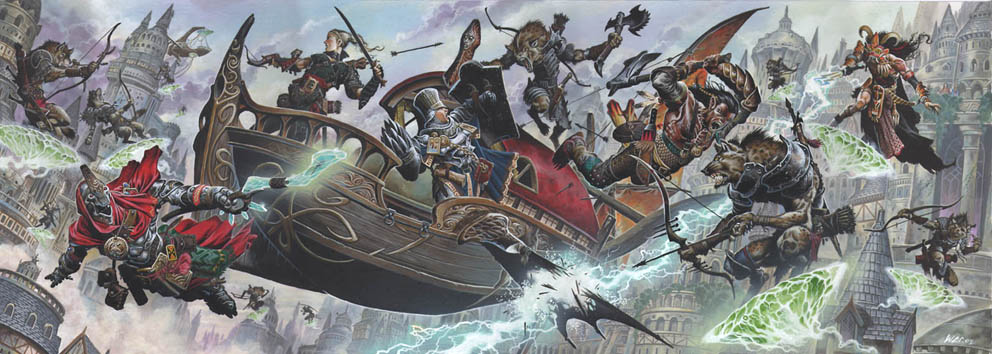
3. A world of Magic
This is a world that developed not through the advances of science but through mastery of the arcane. The end results are the same, the means are different. There is a working class of minor mages that use simple rote spells to provide energy and other necessities that keep the wheels of society moving. Advances in magic item creation have led to everything from self-propelled farm implements to sentient, free-willed constructs.
4. A world of adventure
Steaming Jungles, colossal ruins, giant towering metropolises, and blasted wastelands all Exist in Eberron. The advent of affordable and commonplace magical transportation allow your Players to get there. DMs are encouraged to make quests that travel all over the place to keep with the cinematic style of the game.
5. The Last War has ended - sort of.
The setting is set 2 years after the Treaty of Thronehold and the Establishment of the twelve recognized nations carved out of what was once Galifar. Overtly, the peace has held, but the conflicts and anger that are born out of a war that lasted five generations don't die down just because a piece of paper was signed.
6. The Five Nations
Even during the time of Galifar, the Five Nations existed: Aundair, Breland, Cyre, Karranth, and Thrane. The human-dominated civilizations each developed their own cultures and traditions. Even though Cyre is a blasted waste now known as the Mournland, "By The Five Nations" is a common epithet in Eberron.
7. A world of intrigue.
In the post war world, the nations of Khorvaire are trying to build themselves up and usher in a new age of peace and prosperity. They still compete on many levels - economy, political influence, territory, magical power - stopping short of starting another all-out war. Espionage and sabotage are big business. The Dragonmarked Houses, churches, crime lords, monster gangs, psionic spies, arcane universities, royal orders of knights and wizards, secret societies, evil masterminds, dragons, and numerous other organizations all jockey for position in the aftermath of the Last War. That's not even getting into the ancient secrets that the land held long before Humanity set foot on it.
8. Dragonmark dynasties
The great dragonmarked families are the barons of industry and commerce throughout Khorvaire, and even beyond. They are technically extraterritorial entities, outside of politics and political boundaries, and to join a dragonmarked house you have to forsake any nationality you possess. But people are individuals, they have friends and relatives, they can play favorites. That's not to say that being a member of a Dragonmarked house is a horrible existence. To the contrary, through their businesses and holdings, the matriarchs and patriarchs of each house live like Nobles. Their scions are well cared for as well, since you don't want your public faces to be disgruntled.
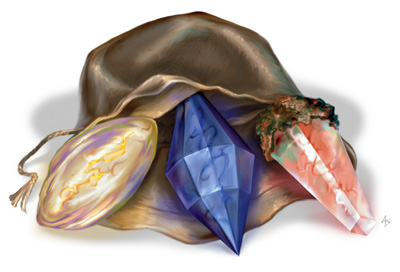
9. Dragonshards
Ancient legend describe the world in three parts, the ring around the world, the subterranean depths, and the land between. Each of these is tied to a dragon: Siberys, Khyber, and Eberron. And each of these parts produces crystals imbued with arcane power known as dragonshards. These are most of the reason why Eberron has the level of magical development that it does. Dragonshards make Dragonmarks more powerful. Dragonshards let you bind and harness elementals. Dragonshards make magic items easier to make, and in some cases possible to make at all. They're rare though, and difficult or dangerous to obtain.
10. New races
Eberron introduces four new races. Changelings are the result of interbreeding between Dopplegangers and Humans, and possess minor shapeshifting power. Kalashtar are descendents of humans who merged themselves with extraplanar entities, giving them great psionic power. Shifters are distant descendants of human lycanthropes, with limited shapeshifting power and instincts from their bestial heritage. And Warforged are sentient constructs created as weapons during the last war, it just so happens that they were created with free will and were granted personhood in the treaty of Thronehold.
At this point the book indicates that how we proceed is up to us, we can go to chapter 7 for more info on the world, chapter 8 for more info on the organizations in it, chapter 2 and 3 for more info on the new classes and rules, or chapter 1 for more info on the races. That's where we'll be going.
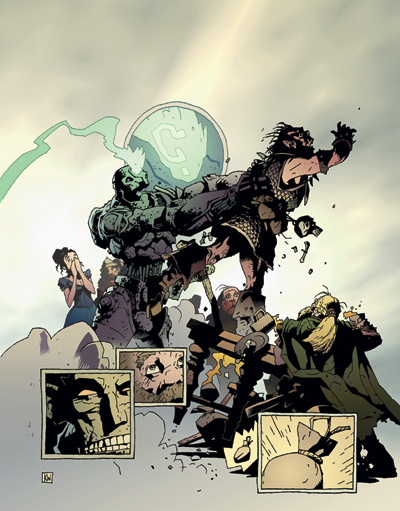
In which a warforged throws an orc into the wall while a Zombie looks on?
Chapter One: Character Races
Eberron has all of the races from the base 3.5 Players Handbook, as well as four brand new races, the Changelings, Kalashtar, Shifters, and Warforged. There's a description of each race, their lands, and what Dragonmarks they may possess. Which brings me to my first
 4e difference. In the original campaign setting, only the base PHB races got dragonmarks, Humans getting five, half-elves and halflings getting two each, everyone else gets one with the Half-Orcs sharing one of the human marks. In 4e,
anyone
can develop any dragonmark, even Warforged, though the houses are still divided along the 'base race's mark' lines. Though I guess that's a valid concern when half-orcs and gnomes didn't even make the cut for 4e core races, it does open up storytelling and player options quite a bit.
4e difference. In the original campaign setting, only the base PHB races got dragonmarks, Humans getting five, half-elves and halflings getting two each, everyone else gets one with the Half-Orcs sharing one of the human marks. In 4e,
anyone
can develop any dragonmark, even Warforged, though the houses are still divided along the 'base race's mark' lines. Though I guess that's a valid concern when half-orcs and gnomes didn't even make the cut for 4e core races, it does open up storytelling and player options quite a bit.
It starts with humans (of course) but after that it goes Alphabetically.
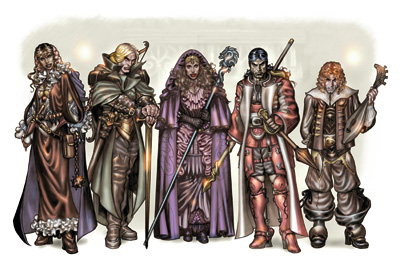
Humans
The dominant race of Eberron, they're described as "A Relatively Young Race", which I find somewhat amusing since there are no less than five other races (in this book alone) descended from Humans. Humans are originally from the continent of Sarlona, the first wave of settlers landed in the area called the Lhazaar Principalities, and spread across the entirety of Khorvaire. Though most modern humans don't give two shits about Sarlona, or even know that that is where they came from.
Humans have five dragonmarks House Cannith has the Mark of Making, and controls the trade of repair and manufacturing. House Orien has the Mark of Passage, dominating the courier, shipping, and transportation trades. House Deneith has the Mark of Sentinel, they dominate the trade of personal protection, and are the only Dragonmarked House that is allowed to maintain a standing army. House Vadalis has the Mark of Handling, making them the leaders in the business of livestock breeding and training. Finally there's House Tharashk, it's primarily seen as a Half-Orc house, but there is no small number of human members. They have the Mark of Finding, which places them at the forefront of the dragonshard hunting business.
There's not much of a description here because Humans are rather varied across the five nations, and get more description there.
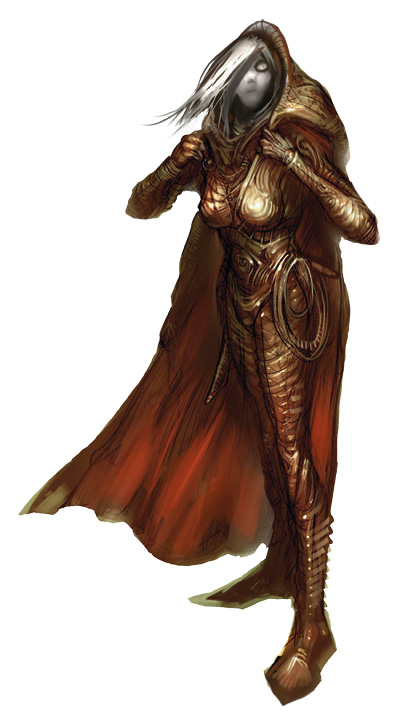
There is something about that armor that makes me feel uncomfortable
Changelings
In Eberron, Dopplegangers and Humans interbred enough that they eventually created a separate unique race. They lack the full shapeshifting capacity of Dopplegangers(And their +4 Level Adjustment) but can change the way they look superficially. They can emulate humans, dwarves and elves, but not halflings or gnomes.
Changelings are prudent and cautious, almost to the point of being paranoid. Only taking risks when their chances of success are all but assured, or the payoff is too good to ignore. They enjoy opulent lifestyles whenever they can have it, either through their own wealth or pretending to be someone who can afford it. They're soft spoken and stealthy in both their conversations with others and method of combat, striking from stealth and beating a hasty retreat when they need to. As far as their physical appearance, they favor their Doppleganger parents more than their Human ones. They have noses and mouths, even if they're barely visible. They also have hair though it's thin and wispy. The largest difference they have from their Doppleganger parents is that they have a distinct gender. Though they can assume either gender, and are fully functional as both. (And thankfully that's really as much detail as the book goes into).
The other races don't trust changelings, but most have reason to do business with them in one way or another. In their alignment they tend towards neutral but they're too fiercely independent to see that as a limitation. They possess no real lands of their own, though sometimes they form small changeling communities within larger ones, either living openly or hiding in plain sight.
They're Medium Humanoids with the Shapechanger subtype. They get bonus saves vs sleep and charm effects, and bonuses on Bluff, Intimidate, and Sense Motive checks. Speak Language is always a class skill for them, and they have the supernatural ability to cast disguise self. The changes are physical (and tactile) unlike the spell. But they cannot change their carried gear. Changelings often either have reversible clothing or carry multiple sets as a result. Their favored class is Rogue, surprising no one.
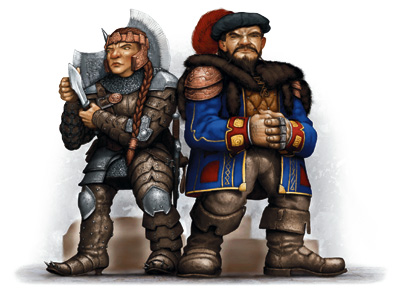
They'll make you an offer you can't refuse
Dwarves
Dwarves are the miners and smiths of the world of Khorvaire. Even more, they mint the coins and run the banks. Issue loans and collect debts. To an extent Dwarves are feared, since they're legendarily ruthless when it comes to their means of collecting those debts. The Dwarven Homelands are the Mror Holds, a federation of dwarven clans that are otherwise unrelated. They never had a unified empire so they didn't rise to prominence like the humans or elves did, but their vast mineral wealth has made them powerful movers and shakers in the political arena regardless. They were subject to the King of Galifar before the last war, but shortly after the opening shots of the war they seceded from Karranth, declaring independence as one of the earliest of the new nations. Clan Kundarak carries the Mark of Warding, allowing them to protect their wealth and vast stores of material goods.
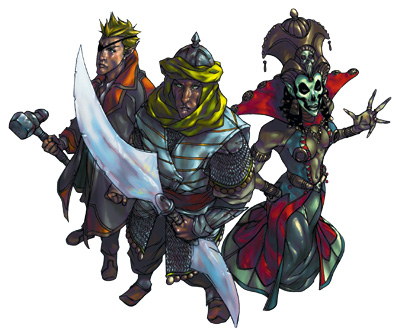
I can't think of anything to say.
Elves
Tens of thousands of years ago, the Elves were slaves to the Giants of Xen'drik. When their society waned, the elves rebelled and fled to the continent of Aerenal, which is covered in fertile tropical rainforests. From there a few elves decided to leave Aerenal and settle on Khorvaire, before humans even set foot on the island. These elves have integrated into human society rather well, and bear little resemblance to either the Aerenal Elves, or the Elves of Valenar.
During the last War, Cyre hired a great many elf mercenaries from Aerenal to fight on their side. After fifty years of fighting, however, they claimed the vast majority of southern Cyre as their own. Apparently back during the Hobgoblin empires, the Elves of Aerenal maintained a trading outpost on the location where Valenar is now. There was some argument over the elvish claim to the land, but the Day of Mourning has made those debates rather academic. There are two Elven Dragonmarked Houses, at one point Phiarlan and Thuranni were one house, but they split during the last war. Both possess the Mark of Shadow, and with it the powers of Scrying and Illusion.
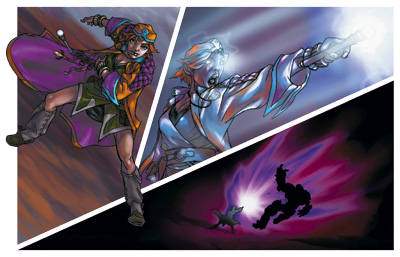
Don't fuck with Zilargo
Gnomes
Gnomes are knowledge hungry little bastards. No fact is too trivial, everything might be important some day. They make excellent librarians, accountants, bards, and alchemists as a result. That said, they are also excellent spies, and gnomish society is filled with webs of blackmail and intrigue that pass completely unnoticed by the humans. Not all of this is malicious, however, most of them consider it a form of courtesy. Being paranoid about your friends means that you find them competent enough to be a threat. Gnomes have never had an empire, but their talents for diplomacy and espionage have kept their nation of Zilargo independent throughout the history of Khorvaire. In addition to their skill as alchemists, Gnomes have mastered elemental binding, and they build the air and sea ships constructed in Zilargo's dry docks. Their only Dragonmarked house is House Sivis, which carries the Mark of Scribing, which gives magical abilities related to the written word and translation.
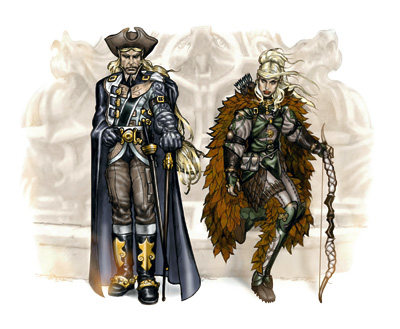
You are beneath Half-Elf Harlock.
Half-Elves
Half-Elves are a unique creation of Khorvaire, and most Half-Elves there are their own distinct race, breeding true amongst their own rather than unique instances of human-elf pairings. To my knowledge Eberron was the first setting there half-elves are a race rather than an exception. They have no lands of their own, though they are found throughout the Five Nations, most commonly in Aundair, Breland, and Thrane. A few migrated to Valenar to take part of the new nation. There are two dragonmarked houses amongst the Half-Elves. House Lyrandar carries the Mark of Storm, and operates all sailing ships and flying vessels, as well as bringing rain to Farmlands. Lyrandar is actually quite powerful as far as Dragonmarked Houses go. They control all transport between Khorvaire and the other continents, and they know it. The other house is Medani, which holds the Mark of Detection, offering services related to personal protection, such as food tasting and trap detection.
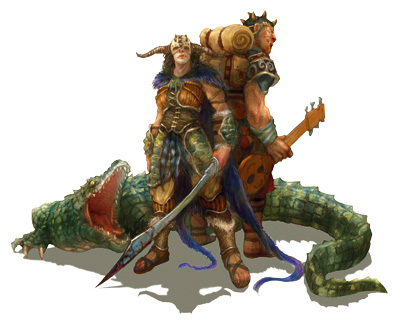
That bard is having the time of his life.
Half-Orcs
Half-Orcs are rare on Khorvaire as Humans and Orcs haven't lived in close proximity in any location except the Shadow Marches, where they thrive. Though they have made some inroads into the Eldeen Reaches and Droaam. They're about as civilized as the humans they live with, and are often mistaken for humans other than their size and strength. House Tharashk is their dragonmarked house, and is described earlier.
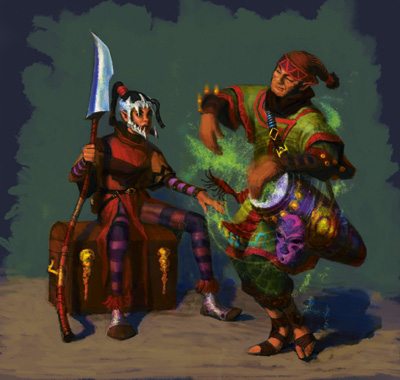
The one on the left is likely a bigger badass than you can ever hope to be.
Halflings
In their homeland, Halflings are nomads who have domesticated the dinosaurs native to the plains.
Yes you read correctly.
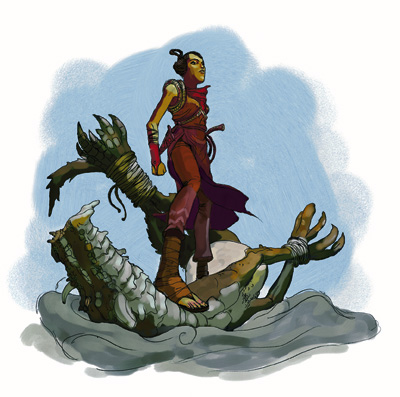
I'm cheating a bit again here, this is from Races of Eberron, but it's an excellent example.
There are urbanized Halflings who have established themselves across Khorvaire as merchants, politicians, barristers, healers, and thieves. The tribal nomads of the plains can sometimes be found in the cities, but the Halflings found in the cities normally blend in as well as their parent races. They originated on the Talenta Plains, and that is where they thrive. There are two Dragonmarked houses. Ghallanda has the Mark of Hospitality, granting magical abilities related to food, drink,and shelter. They control most inns and restaurants, and operate as chefs for royalty or prepare food for their nomads on the plains. The other house is Jorasco, which carries the Mark of Healing. They control hospitals and other curative services throughout Khorvaire.
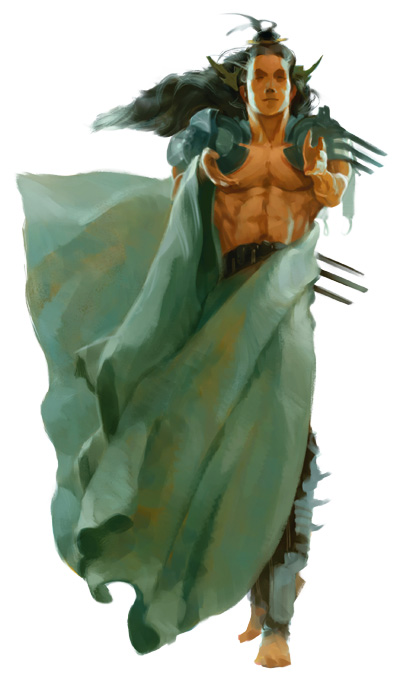
No you didn't just stroke out there for a moment, most Kalashtar artwork looks like it's been put through a soft focus filter, I really dislike it.
Kalashtar
The Kalashtar are a compound race, incorporeal entities from Dal Quor, the region of Dreams, merged with human bodies and spirits to form a new and distinct species. The entities were a minority of Quori, the residents of Dal Quor, and they were hunted and persequted for their religious beliefs. Thousands of years after the Quori invaded Eberron and the connection between the Realm of Dreams and Eberron was severed, the Kalashtar were the first of the Quori to figure out a way to get back to the Material Plane, where they possessed willing humans. A quirk of the process was revealed when they tried to breed, as their children inherited a connection to the Quori of the parent of their same gender. New Kalashtar were born, not possessed. At this point the connection to the quori is spread across so many Kalasthar that the connection is mostly instinctive. It does not exist as a separate consciousness in their mind, but they have memories of places they've never been and of realms that do not exist.
Of course three hundred years later the other Quori figured out a way to psychically project their way to Eberron. Though rather than traveling physically, they project themselves and possess human bodies known as the inspired. They leave their own bodies behind much as mortals project their minds to Dal Quor when they dream.
Kalashtar are true fusions of human and Quori, they possess keen intellects but are not ruled by logic. They seek perfection of their mind and spirits, sometimes to the exclusion of physical pursuits. They're compassionate but are often alien to the other races. They're more interested in their own Psionics than any magic that Khorvaire has. They also cannot dream, as they are outcasts from their home plane. They look similar to humans but are 'elegant' and 'almost too beautiful'. They're born diplomats and relate well to everyone, they also tend to Lawful Good in alignment. Their homeland is a region of the continent of Sarlona known as Adar, a land of mountains and hidden fortress monasteries. Ironically they're probably more numerous across Khorvaire than they are in their homeland, as on Khorvaire at least they aren't actively persecuted by the inspired lords of Sarlona.
They follow no gods, but they do have their own religion known as the Path of Light. They believe that there is a universal force of positive energy called il-Yannah, "The Great Light". Through meditation and communion with this force they believe they are strengthening their minds and bodies against the darkness they must fight, and hope to usher Dal Quor into a new age of light.
They're Medium Humanoids, with a saving throw bonus against mind affecting spells and possession. They also get a bonus to Bluff, Diplomacy, Intimidate, and Disguise checks to look like humans. They sleep, but cannot dream, and as such are Immune to any spell or ability that relies on such. They get bonus power points, and can use the Mindlink psychic ability once per day, which allows them to communicate telepathically with any willing creature within 30 feet. Unsurprisingly their favored class is Psion.
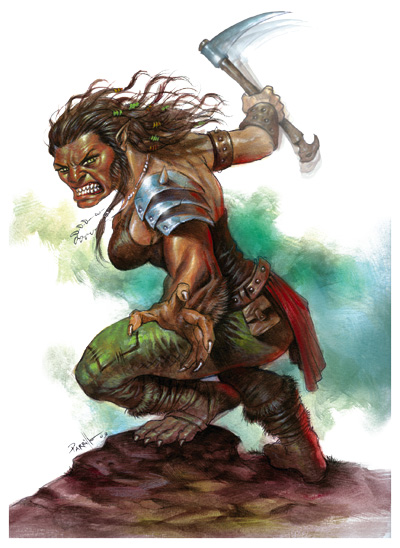
Uhh apparently the feral werewolf people have invented the wonderbra.
Shifters
Sometimes called "the weretouched", shifters are descended from humans and the natural lycanthropes that are almost extinct on Khorvaire at the time of the setting. They can't fully change shape, but they can take on some animalistic features, a state they call Shifting. They evolved into a distinct culture with their own traditions and identity. Their personality is affected by their animal nature, some are boorish and crude, others are quiet, shifty, and solitary. Most have a predatory personality, as they're descended from carnivores, and think of things in terms of hunting and prey. They view survival as a challenge to be won.
They're humanoid in shape, but they're lithe and move in a crouched posture, springing and leaping rather than walking normally. Their faces have a bestial cast, flat noses, and sideburns(in both sexes). They also have heavy hair on their arms and lower legs. Many races feel uncomfortable around shifters, in the way most people get worried if there's a wild bear sitting next to them. Halflings though, in general, get along with them. And most people can get along with individual shifters.
They tend to be neutral, and have no lands of their own, though they are most commonly encountered in the Eldeen Reaches and any other remote areas, and now we get into the fun rules.
They're humanoids with the Shapechanger subtype, get a bonus to Dex with a penalty to Int and Cha, you know, cause they’re animals. Low Light Vision, +2 bonus on balance climb and jump checks, and Ranger as their favored class. And they get Shifting as a supernatural ability.
One per day a shifter can tap into their lycanthropic heritage in a manner similar to a barbarian's rage. Each shifter has a shifter trait, there are 6 in the core book with more added later, each one grants a +2 bonus to an ability score and another advantage unique to each trait. it lasts 3+Con rounds, and one additional round for each shifter feat they've taken, and they can shift one additional time per day for every two feats they have taken.
The traits in the core book are Longtooth and Razorclaw, which give strength bonuses and bite/claw attacks respectively. Cliffwalk and Longstride, which give dex bonuses and a climb speed/land speed bonus. and Beasthide and Wildhunt, which give con bonuses and an AC bonus and the Scent quality.
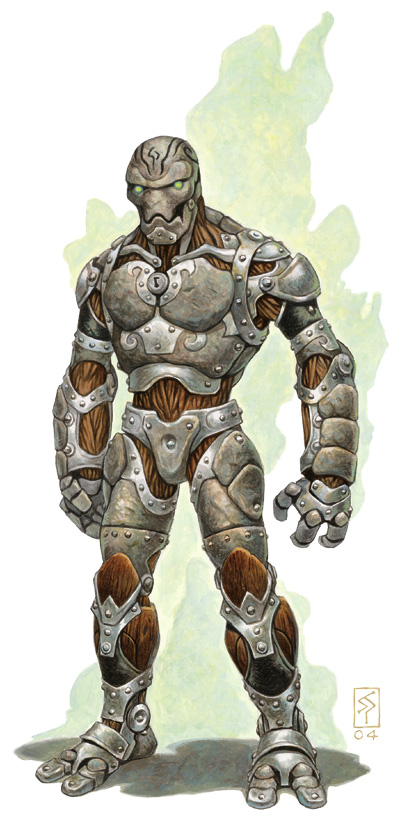
Oh Steve Prescott, is there anything you can't draw awesomely?

Warforged
Finally the main event. Built as mindless machines to fight in the Last War, they developed sentience as a result of the arcane experiments to make them better fighting machines. With each new generation that emerged from Cannith's creation forges they evolved until they became new creatures, living constructs. They're renowned for their combat prowess and their single minded focus. They made steadfast allies and truly implacable foes. They were literally built to fight, and they continue to serve that purpose as well as any one can. They fight without remorse and with an adaptability unseen in other constructs. Now that the war has ended, however, they search for a place in the relative peace. Some have become artisans or laborers, while others have become adventurers.
They look like massive humanoids molded out of obsidian, iron, stone, darkwood, silver, and organic material, though they move with a grace that belies their construction. Each warforged has a unique sigil on their forehead known as a Ghulra, the Dwarven word for truth (Thanks for the unfortunate implications, Eberron). If a warforged is injured in such a way as to remove the Ghulra, and then repaired, the mark will re-assert itself on their forehead, and if a Warforged is ever able to cast Arcane Mark, it will take the form of their Ghulra. They have no physical distinction of gender, though some have mental or vocal ones. Most are unconcerned with matters of Gender. They do not age naturally, though their bodies still decay as their minds improve through experience.
Some Warforged were built special, either having additional armor plating, special construction materials, or no armor plating at all. Other warforged have modified themselves 'after-market' with embedded weaponry or other enhancements. Though they were officially granted freedom, in the nations of Thrane and Karranth they're still seen as indentured servants. The military spent a lot of money to get them and they want their money's worth. Most warforged accept this state with equanimity, though others seethe with resentment and hate their 'masters'. More often than not they're neutral in one respect or another, they weren't built to ponder moral quandaries but they're learning how.
The first Warforged off the line were Barbarians, Fighters, rogues and the like. In recent years some have been built for more esoteric tasks such as wizards or artificers. Uniquely this means that their randomized age chart is reversed, scholarly professions have younger Warforged than the simple ones.
There's a sidebar here on
The Nature of the Warforged
. During the last days of King Jarot's reign, he grew increasingly paranoid about perceived threats both in and outside of the kingdom. He tasked House Cannith with creating a new immortal soldier to protect his kingdom both in his lifetime and afterwards. The first warforged were created by Merrix d'Cannith, and they walked off the line during the last days of Jarot's reign. When the nation fractured each faction had their own compliment of warforged fighters. Merrix's Son Arren was the first one to make breakthroughs in true sentience, and the first Living Constructs were created only thirty-three years ago. And Cannith started selling warforged to anyone with the coin to afford them.
As a part of the Treaty of Thronehold, two important decisions were made regarding Warforged. First, they were people, not property. Second, the creation forges were shut down, and the creation of new warforged was forbidden. This has become a point of contention amongst some Warforged, as they are considered living creatures, but cannot reproduce on their own. There are two current sources of new warforged, operating in defiance of the treaty. Merrix d'Cannith, grandson of the original, continues to run an illegal forge in the depths of Sharn. The other source is within the ruins of the Mournland, and is run by the Lord of Blades, unfortunately he's not as proficient as Merrix, and his are... defective, some are mutated.
Warforged are members of the Living Construct subtype, which was created specifically for them. Specifically it lets them get class hit dice and a constitution score. Unlike normal constructs they don't have low light vision, or darkvision. They're vulnerable to mind-affecting spells, critical hits, nonlethal damage, stunning, ability damage, ability drain, death and necromancy effects. They are immune to poison, sleep effects, paralysis, disease, nausea, fatigue, exhaustion, the sickend condition and energy drain. They don't heal naturally, and normal magical healing (Cure) is only half as effective on them. There's a special line of Repair spells that do work on Warforged at full strength. They also always count as wearing metal armor for the purposes of Heat Metal and shocking grasp and similar spells. they can't bleed out, and don't need to eat, sleep, or breathe. But they can eat magical items to gain their effects.
They get a bonus to Con and a penalty to Wis and Cha, because they’re robots. A +2 armor bonus that comes with a 5% arcane spell failure chance that counts as light armor. They've got a natural slam attack and light fortification as well. Surprise surprise their favored class is Fighter.
 4e Races
4e Races

Dragonborn
originate from Argonnessen. Legend holds that there are great dragonborn city-states that war throughout the interior either over the Draconic Prophecy or the behest of their masters. Dragonborn on Khorvaire are remnants of a Dragonborn outpost nation that once existed in Q'barra, but it fell as swiftly as it rose, and no modern Dragonborn remembers what happened to it.
Eladrin
actually have one of the more interesting origins. There are seven great cities of the Eladrin known as the Feyspires, and they have been appearing on Eberron since the Age of Giants. They would appear, allowing the Eladrin to intermingle with the mortal races before bringing them back to the Feywild. Some would remain behind but they were the exception, not the rule. That was at least until Shae Tirias Tolai was ransacked by the Giants of Xen'drik. Those Eladrin were enslaved and the long years separated from the Feywild turned them into the Elves of Today. That would be the end of the story if not for the fact that all of the Feyspires were on Eberron when the Day of Mourning occurred, and none of them have left since. They have left no lasting mark on Khorvarian culture, but they mean to, now that they're stuck there.
Tieflings
are descended from the corrupted human bloodlines of the Sarlonan nation of Ohr Kaluun. Sarlona tried to wipe out the competing arcane society but they fled to Khorvaire. Honestly it seems more like an afterthought than anything else.
Eberron 4e came out between the PHB2 and PHB3, so there are rules for Deva(spirits of light that fight the Rakshasa), Goliath(They were slaves on Xen'Drik and then somehow got to Khorvaire, it isn't explained), and Shifters(since they got upgraded into a ‘core’ race), but no Shardminds or Gith.
Up Next: This guy right here
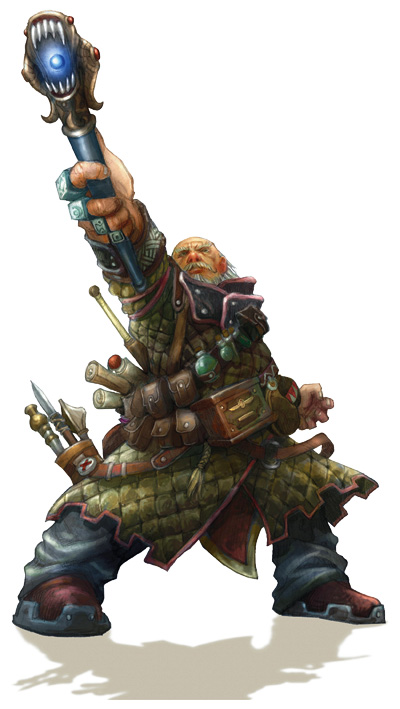
Classes & Prestige Classes
Original SA post
So after discussion with Lemon we're just going to divvy up the rest of what the core book covers between us, chapter order be damned.
That said I did promise to tell you about this guy, didn't i?

Artificer
The Artificer is the unique class that was created specifically for Eberron, and it's a big part of the culture of the world. If magic is the Technology of Eberron, Artificers are the Engineers. They make the magic items that let the world work, and most of their class features are designed around that. They also have access to spells that temporarily enchant items. Instead of casting Bulls Strength on the fighter, you'd cast it on his gloves. That's not to say that they're simply a buffbot, just look at the picture up there, you can do a whole lot with a bandoleer of wands.
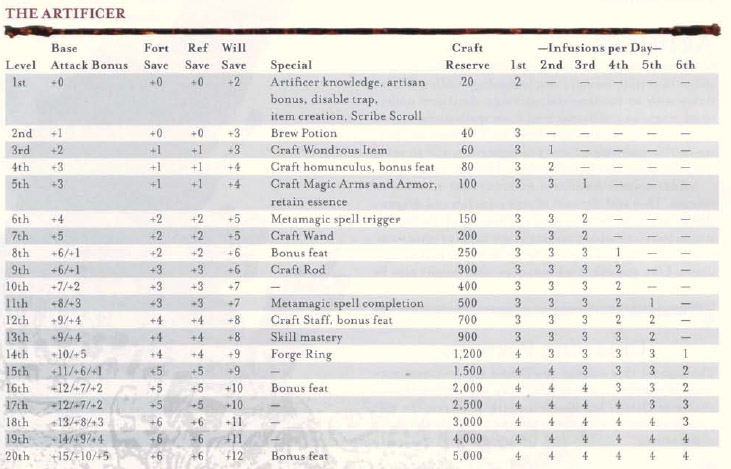
Infusions are an Artificer's spells, they don't count as either arcane or divine, but they are spells and can be interrupted and don't work in situations where spells wouldn't. I already mentioned that they need to be cast on items for them to even function, but they can also be cast directly onto constructs, and there are some spells that only work on constructs and warforged. They're an Int Based caster, but since almost all of their spells are buffs, they don't need to pump it like a wizard, there's something more important for that.
Craft Reserve this is a pool of faux XP that the artificer gets when they level up, they can spend it in lieu of their own XP when they cast spells or make magic items. Unused craft reserve points are supposed to go away when you level up and replaced with the new total, but I've never played with a DM who did that.
Artificer Knowledge Artificers can make a

Artisan Bonus Artificers get a bonus to Use magic Device checks to activate items that they could create.
Disable Trap: They don't get trap sense, but they can actually disable traps which is more than can be said for a lot of classes.
Item Creation: Artificers can make pretty much everything, even divine magic items or spells they don't get on their list, how? Well, they can use their Use Magic Device skill to fake having spells on their list, they can also use it to fake any other requirements, like race, alignment, gender, whatever. So even if Intelligence is their casting stat, Charisma is probably the most important ability for an Artificer to have.
Craft homunculus: Artificers don't need the Craft Construct feat to make homunculuses. This might seem like a big deal, but Eberron has Homunculuses like this.
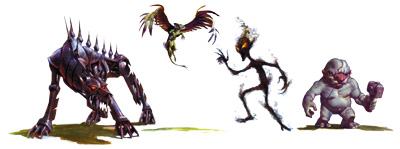
The one on the far right is notable because it can make magic items for you, sure you have to pay the costs and cast the spells for it, but you spend an hour setting up the process and it will finish it, no matter how long it takes.
Later books have homonculuses that are bows that fire themselves and a chest that follows you around and gives you items when you ask for them.
Retain Essence: The main reason why I've never seen a DM empty out the craft reserve after level ups, artificers can disenchant things, more or less, destroying them and gaining whatever XP was used to craft them for their Reserve.
Metamagic Spell Trigger/Completion These let you apply metamagic feats to items as the artificer uses them. Trigger items eat up more charges as you burn them out faster, Completion requires a more difficult UMD Check.
 In 4e they're very different, due to the changes in the way that magic items work, and the advent of healing surges making it so warforged don't need their own special brand of healing. They're arcane leaders now, with the generic healing capacity that brings, and a lot of their abilities/utilities rely on replenishing/modifying the uses of magic items, tossing around little tinker items that explode/shock/otherwise deal damage. Or smacking people with a weapon or shooting them with a crossbow. Or tossing around tiny robots that do things.
In 4e they're very different, due to the changes in the way that magic items work, and the advent of healing surges making it so warforged don't need their own special brand of healing. They're arcane leaders now, with the generic healing capacity that brings, and a lot of their abilities/utilities rely on replenishing/modifying the uses of magic items, tossing around little tinker items that explode/shock/otherwise deal damage. Or smacking people with a weapon or shooting them with a crossbow. Or tossing around tiny robots that do things.
The Other Classes
Here we have any unique rules for the various classes in Eberron, and a few example characters.
Barbarian
Nothing really beyond the fact that there are halfling barbarians that ride velociraptors.
Bard
There are a couple of new feats that grant new bardic music abilities, and bards can take them as bonus feats instead of gaining new bardic music at the levels they'd get that.
Clerics
Clerics can worship no gods, just picking two domains and there you go(as long as their alignment matches any alignment domains they pick), their power coming from Siberys itself. Others worship one of the pantheons in which case they can choose any domain any member of that pantheon has, again, as long as any alignment domains they choose are part of their alignment.
Also, the Gods of Eberron are fairly distant and uninvolved in day to day affairs, and don't care what their clerics do as long as their worship is genuine. So a cleric can cast a spell of any alignment, or indeed be of any alignment, and their god will not care. Their church might, and they might get excommunicated or hunted down for heresy, but they'll still be able to cast spells.
Druids
There's a brief history of druidism in here that I think is worth going over.
Back when the goblins still ruled Khorvaire, a black dragon named Vvaraak had a vision of a planar invasion of immense magnitude. Knowing that the rest of the dragons were naval-gazing too hard to help the Humanoids fight it off, she went to Khorvaire to teach the first Orc druids about the three dragons of legend, how to tap into their power, and how to seal the gates between planes the next time they open.
The invasion occured, seven thousand years later. Xoriat, the Plane of Madness invaded, Mind Flayers and their Dalkyr Overlords overran the Empire of Dhakaan. The Orc druids were eventually able to fight back, and closed the gates to Xoriat, though they didn't sever the realm from Eberron entirely. Which is good, because when the Giants did that to Dal'Quor it almost destroyed the world.
There are several distinct druidic orders but they'll be gone into in more detail later.
As far as unique options, there's a giant list of animal companions and feats that suit druid characters which will be gone over later.
Fighter
Even less than Barbarians.
Monk
There are a couple of unique monastic traditions, including one that uses longswords, and another that uses paired kamas to flense their opponents to bone.
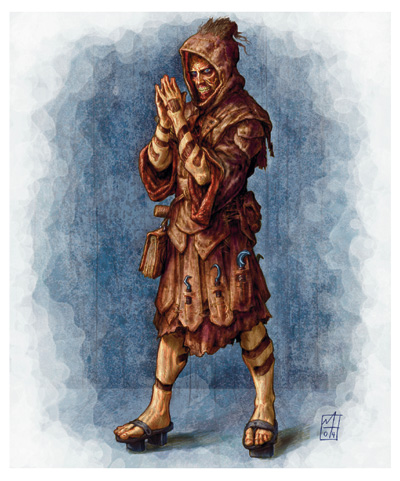

There's also a note that warforged monks can use Wholeness of Body to repair themselves at full strength.
Paladin
Halfling paladins get velociraptor mounts, of course. Warforged can use Lay on Hands to both heal and repair as necessary.
Psionic Classes
Exist! Better get the Expanded Psionics Handbook!
Ranger
Not much except they point you at the Druid animal companion's list.
Rogue
Like fighters, there isn't much info here.
Sorcerer
Sorcerers of Eberron have a more mystical bent than normal, Dragonshards, the three Dragons, Dragonmarks, the Draconic Prophecy, Sorcerers see all of that as a part of their heritage.
Wizards
Not much, though it's worth noting that the sample Wizard is a Shifter, which is strange. They play it straight, though.
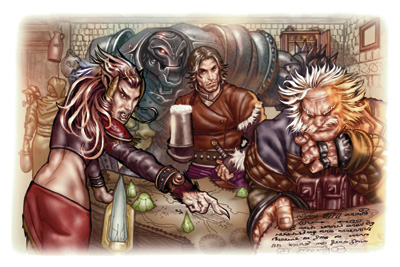
She has questionable taste in headwear though.
Prestige Classes
There are eight prestige classes in the Core Book, two I will be holding off until the next update where I go over feats and Dragonmarks (Since they're related to Dragonmarks).
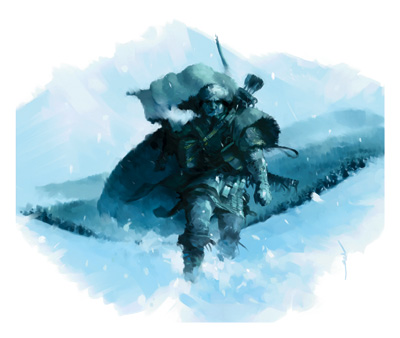
Eldeen Ranger
These are the Rangers that are directly aligned with one of the five druidic sects.
-
Ashbound:
These are the 'extremist' druids, that thing everyone should go back to the good old days when we lived in the forest and wiped our asses with leaves. They take the druidic command to 'destroy the unnatural' to include both arcane and divine magic. They also destroy farms and ranches that attempt to 'contain or cultivate nature'. They aren't strictly evil, and want to avoid killing.
-
Children of Winter:
Spring comes after winter, and is a time of great rebirth. So why don't we just kill EVERYTHING and bring about the new Spring that much sooner? Who's with me!
-
Gatekeepers:
The original Druidic sect, the ones who keep the teachings of the dragons.
-
Greensingers:
Man, Fey are Awesome, Let's hang out with the Fey more! Woohoo! Fey!
-
Wardens of the Wood:
The largest sect, they protect the Plains and Forests of the Eldeen Reaches.
Ultimately this isn't a very good prestige class, the things it offers that a vanilla Ranger doesn't aren't that good. Wardens of the Wood give you the Improved Critical feat and Smite Evil 1/day, except it's still charisma based and it uses your Eldeen Ranger level for bonus damage, meaning it caps out at 5. And charisma is a Ranger's dump stat. Greensingers give you Resist Nature's Lure and a Paladin's Cha mod to Saves ability. The other 3 have nothing even worth noting. at least the art is sort of good?
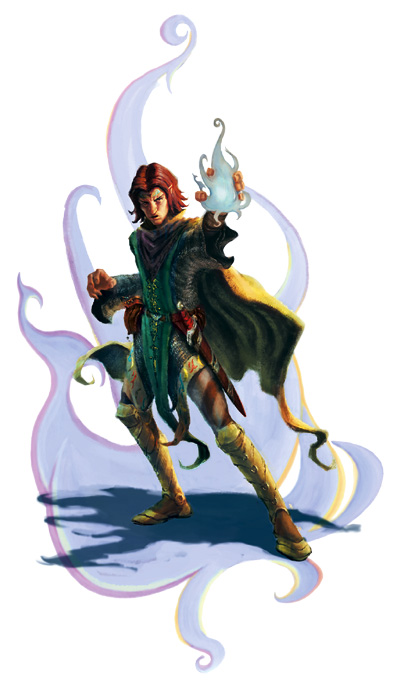
Exorcist of the Silver Flame
This is more like it. On the big list of things the Silver Flame hates, first is Lycanthropes, second is Demons/Devils. Exorcists are the guys who go out there and fight the former.
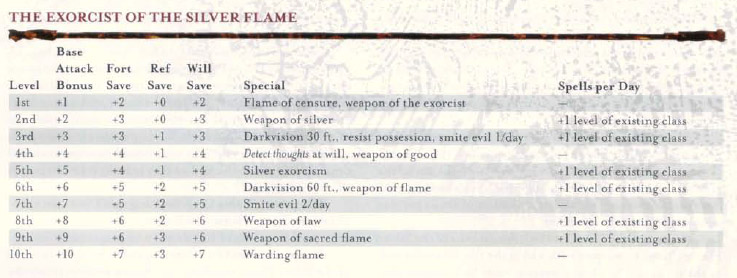
Flame of Censure: Turn evil Outsiders, but they get banished instead of destroyed.
Weapon of the Exorcist: One weapon the Exorcist is proficient in and that has been in her possession for at least 24 hours gets a +1 sacred bonus to damage rolls. The exorcist can only have one sacred weapon at at time but there seems to be no penalty to switching. Weapon of Silver , Weapon of Good , Weapon of Law makes the weapon count as silver, good aligned, and law aligned. Flame gives +1d6 Fire, Sacred Flame gives +1d6 sacred, and doesn't specifically say it overwrites the former. Also all of these abilities stack with whatever special properties the weapon already has. This is the bread and butter of the prestige class right here.
Resist Possession: Bonuses on saving throws against possession and mind affecting spells cast by evil outsiders/undead.
Smite Evil: Stacks with paladin/cleric levels to determine the extra damage. Otherwise it's the Paladin ability.
Silver Exorcism: The Exorcist gets a bonus on charisma checks to force out Possessing spirits, but doing so deals sacred damage to the host as you scream "THE POWER OF
Warding Flame: at will an exorcist can wreathe themselves in flame, +2 bonus to AC and Saving throws, SR25 against spells cast by evil creatures, and any evil creature that attacks them must make a DC20+cha fort save or be blinded permanently.
I don't care if this class is sub-optimal, there's something fun about playing a character that can light themselves on silver-fire and wade into an army of demons and come out smiling.
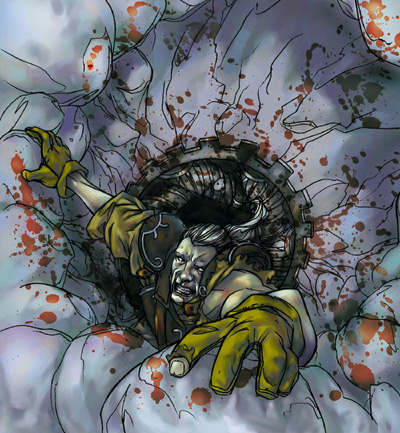
What is going on here. No seriously, what is that behind him?
Extreme Explorer
This is another not-great prestige class, it's basically "The Action Point"/"The Pulp Adventurer" prestige class, everything that isn't stolen wholesale from a Rogue class ability either gives you more action points, gives you more things to spend action points on, or makes the action points you spend more powerful. Extreme Hustle Does give you an extra move action for an action point, I guess, so if you wanted to break mach speed for 1 round by spending 30 action points, this is the class for you.
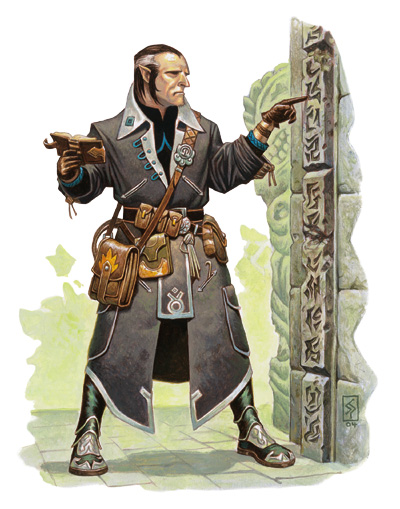
Master inquisitive
Since this is a Pulp setting, this is the "Hard Boiled PI" prestige class, and unlike the Extreme Explorer it actually brings something interesting to the table.
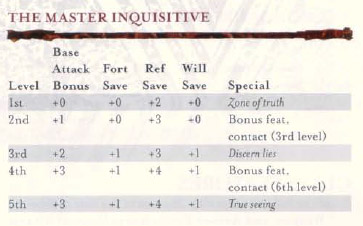
You're just so amazing at investigating, you can generate Zone of Truth, Discern Lies, and True Seeing as spell like abilities. Also you get Contacts that you can call in for favors, they work like hirelings but they'll do more stuff for you, and you can get Aristocrats, which is a big thing in Eberron.
Even better, the requirements for it are such that you can qualify by 3rd level, rather than 5th.
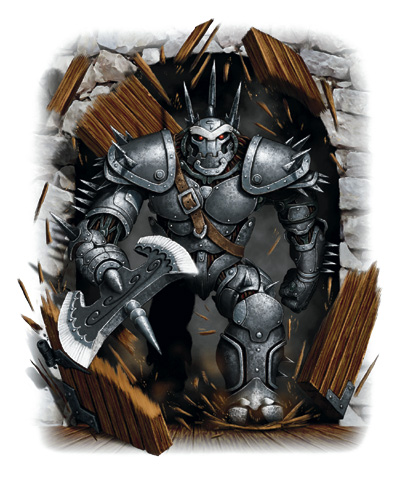
Warforged Juggernaut
 who wants to be a weak fleshy thing. You're a Warforged with built in adamantine plating and a will to emulate the Kool-aid man.
who wants to be a weak fleshy thing. You're a Warforged with built in adamantine plating and a will to emulate the Kool-aid man.

Armor Spikes: So one day you suddenly grew adamantine armor spikes. Like out of your body.
Expert Bull Rush: You get your class level as a bonus on Strength checks to initiate or oppose a bull rush, also on strength checks to break down doors.
Powerful Charge: Deal more damage on Charges.
Reserved: Bluff? Diplomacy? Gather Information? Sense Motive?
 cares not for these things, and takes a penalty equal to his class level on those skills.
cares not for these things, and takes a penalty equal to his class level on those skills.
Charge Bonus: A bonus on charge attacks

Construct Perfection: Basically, everything that Warforged are vulnerable to because they're Living constructs as opposed to Regular constructs slowly goes away.
Extended Charge: Adamantine plating slows you down, so here's increased charge distance to make up for it.
Healing Immunity: You can no longer eat or receive magical healing, but who cares about such things, you've got a pet Artificer don't you?
Superior Bull Rush: So when you bull-rush someone, you give them a hug, a nice armor-spiked hug.
Greater Powerful Charge: Treat yourself as a size category larger when you're charging for how much damage you deal.
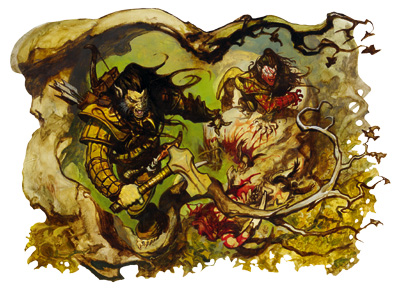
Weretouched Master
This is the Warforged Juggernaught's furry cousin. Where as the Jugg would let a Warforged turn into a pure construct, this one lets a shifter turn into a Lycanthrope. Not a full one, but a reasonable approximation.
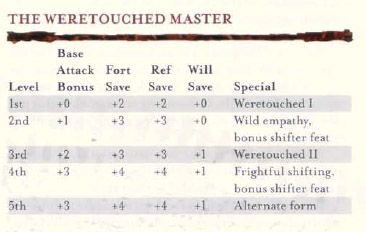
Weretouched: You have to pick one of six animals for your Shifter to have been descended from, Bear, Tiger, boar, Wolverine, Rat, or Wolf. Which one you pick gives you additional bonuses when you shift and tie into the capstone ability.
Unless you're choosing something for roleplay reasons, though, you're going to pick Bear or Tiger.
Bear/Tiger give +2 str and claws, if they're already a razorclaw shifter the claws deal more damage.
Boar/Wolverine give +2 con and a bite/gore, if they're already a longtooth, bigger die, of course.
Rat/Wolf gives +2 dex and a bite, lather rinse repeat.
Once we get to Weretouched II we get the sort of fun stuff, again only available while shifting.
Bear:
 Improved Grab
Improved Grab
Boar: +4 on Will Saves
Rat: Climb Speed
Tiger:
 Pounce
Pounce
Wolf: Trip
Wolverine: Rage
Frightful Shifting: makes people shaken for 5d6(
 ) rounds if they have less hit die than you and see you attack or charge while shifting.
) rounds if they have less hit die than you and see you attack or charge while shifting.
Alternate Form: Instead of shifting, you assume a Hybrid form based on your chosen animal, and you don't get your normal stat boosts, instead gaining the ones on the following table.
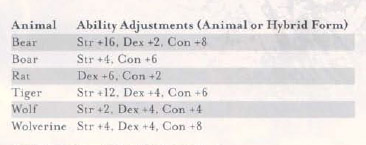
So yeah, +16 str and improved grab, or +12 str and Pounce, vs everything else.
 Unfortunately the only Prestige Classes from this book that made the transition into 4E paths were the Exorcist and the Juggernaut, and only the Juggernaut made it through more or less intact, remaining a charge-machine. The Exorcist is now a ranged attacker with Leader leanings that any divine class that worships the Flame can go into. They get bonuses against demons, devils, shapechangers, and undead, and heal people when they deal fire damage. But they no longer get a weapon of smiting goodness.
Unfortunately the only Prestige Classes from this book that made the transition into 4E paths were the Exorcist and the Juggernaut, and only the Juggernaut made it through more or less intact, remaining a charge-machine. The Exorcist is now a ranged attacker with Leader leanings that any divine class that worships the Flame can go into. They get bonuses against demons, devils, shapechangers, and undead, and heal people when they deal fire damage. But they no longer get a weapon of smiting goodness.
Next Time: Feats, Dragonmarks, and this guy.
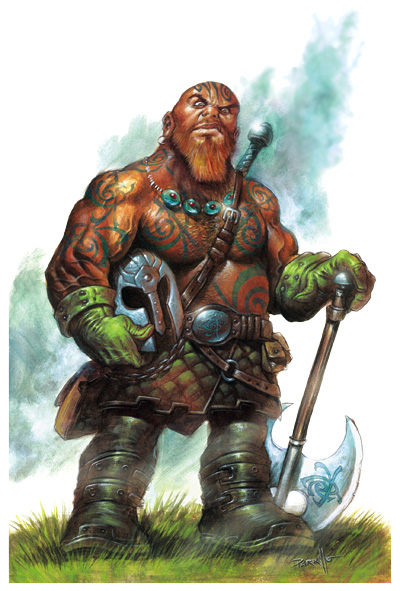
Feats & Dragonmarks
Original SA post
Feats and Dragonmarks
AKA: Pretty pictures, the chapter.
Feats in 3.5 Eberron are rather varied but there's a few areas that get more space than others.
Warforged Feats
Unsurprisingly, there are quite a few feats for Warforged and Shifters.
Adamantine Body is one of the prerequisites for the Warforged Juggernaut. It and any of the *Body feats that show up in this book or later replace the armor-plating that you normally get as a warforged with something else. In this case you get the equivalent of adamantine fullplate. Of course you get all the drawbacks like a nasty arcane spell failure chance. -5 armor check penalty, and a max dex bonus of +1, but if you're going down the warforged Juggernaut path that doesn't matter. It also gives you dr 2/adamantine, with a rider feat that improves it by 1.
Improved Fortification is for those warforged who want immunity to critical hits and sneak attacks (and magical healing) but don't want to be a juggernaut.
Mithril body turns your armor plating into a mithril breastplate. It also has a rider feat that you can take multiple times to increase it's max dex and decrease it's armor check penalty.
Shifter Feats
There's a series of elite feats ( Beasthide Elite , Cliffwalk Elite , etc.) that improve the effectiveness of your shifter trait. There's also Extra Shifter Trait that... gets you an extra shifter trait, it doesn't give you the ability score bonus while shifting but you can double up on AC and Claws, or Bite and Claws, but you can only take the Extra Trait feat once. There's also Shifter Defense and Greater Shifter Defense that give you dr/silver while shifting, Healing Factor that
Druidic Tradition Feats
Remember the druidic traditions from last update? Well each of them gets their own feat, some of them even get multiple feats.
All of these require the ability to summon nature's ally spontaneously, which means you need to be a Druid or a Spirit Shaman (Did you forget those exist? You're forgiven)
Ashbound makes your summoned animals last longer and more accurate when they're attacking.
Child of Winter lets you use wild empathy on vermin, and summon vermin instead of animals. It also has two more feats, Vermin Companion which lets you take a vermin as an animal companion, and Vermin Shape lets you wild shape into vermin.
You see it's because they're evil, and insects are icky.
Gatekeeper Initiate makes you resistant to aberrations, gives you bonuses on checks related to information on aberrations, and a bunch of skills that help you kill aberrations. Repel Aberration lets you turn aberrations, same rules and everything, What do you mean charisma was your druid's dump stat?
Greensinger Initiate Gives you a bunch of bard skills as class skills and adds a bunch of bard spells to their spell list.
Warden Initiate Gives you an armor class bonus when you're in a forest, some ranger-y skills, and some extra spells.
Everything else that's worth noting
There are a couple of monk oriented feats that give you new weapons to flurry with as long as you're proficient in them and have weapon focus in them. Double Steel Strike works with the Two-Bladed sword, Serpent Strike with a longspear, Whirling Steel Strike works with longswords.
Beast Totem is a druid/ranger feat that lets you pick a magical beast to be your 'totem', and gives you a bonus on saving throws against whatever form of attack that's associated with that magical beast, which isn't that great.
Which is why there's Beast Shape which lets you wild shape into your beast totem, with all it's special abilities, and Totem Companion which lets you take your totem as an animal companion. Druid with a Chimera? Sure.
Finally there's Flensing Strike which is oriented towards monks, but anyone can take. Using a Kama you cut the skin off of your opponent, forcing them to make a fortitude save or take a -4 penalty on attack rolls, saves, and checks for a minute. The DC for this is pretty high, 10+1/2 character level + wis (+2 if you're using two kamas). Everything that has flesh and isn't immune to critical hits can be affected. Grab a knife and carve a dragon.
Dragonmarks
Dragonmarks are unique to Eberron, they are the manifestation of the Draconic Prophecy within the lesser races. Each dragonmark offers a few spell-like abilities and a bonus on a skill. As the spell like abilities are used, the mark heats up. Once it's used up for the day it's almost painfully hot. There are three levels of each dragonmark, Least, Lesser, and Great, growing in size and complexity as they get more powerful. Dragonmarks can show up in any member of a dragonmarked race, even if they aren't a member of the houses, but they tend to follow family lines, and marked non-house members sometimes find themselves press-ganged into marriage. Of course you don't want intermarriage between dragonmarked families. Because, well.
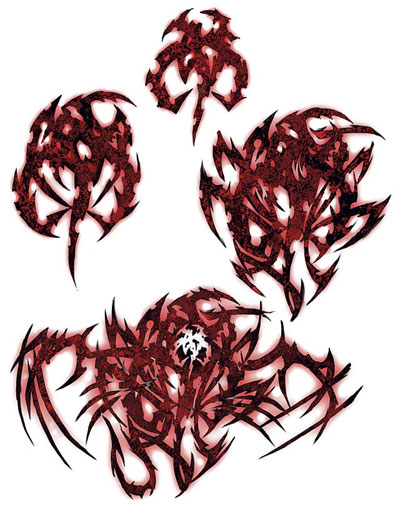
As a bonus, Dragonmarks look pretty cool.
Aberrant Dragonmarks
These don't fit into the normal categories of other dragonmarks, while say the Mark of Detection has one or two options at every level, aberrant has thirteen at the Lesser level alone. Most of them are hostile in some way, like burning hands, inflict wounds, but Jump, floating disk, and Shield are in here too. They're also supposedly very painful and tend to vary in shape, even on the same person. Ever had a tattoo? Ever had a Tattoo that changed shape in your skin?
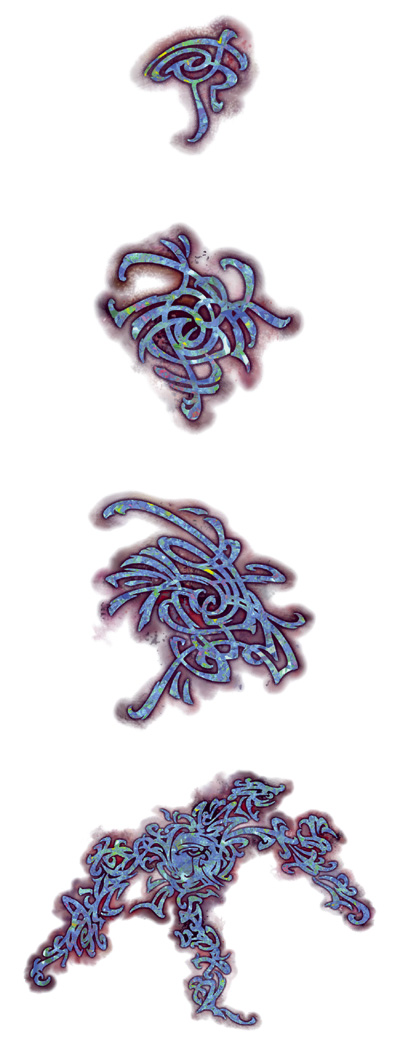
Mark of Detection
Possessed by the Half-Elves of House Medani, the mark of detection is focused on seeing through deception. The powers include Detect Poison, see invisibility, and true seeing.
One thing to note with all of these designs is that you can see the design of the least dragonmark in the lesser and greater ones.
The fourth designs are different, we'll be getting to those later.
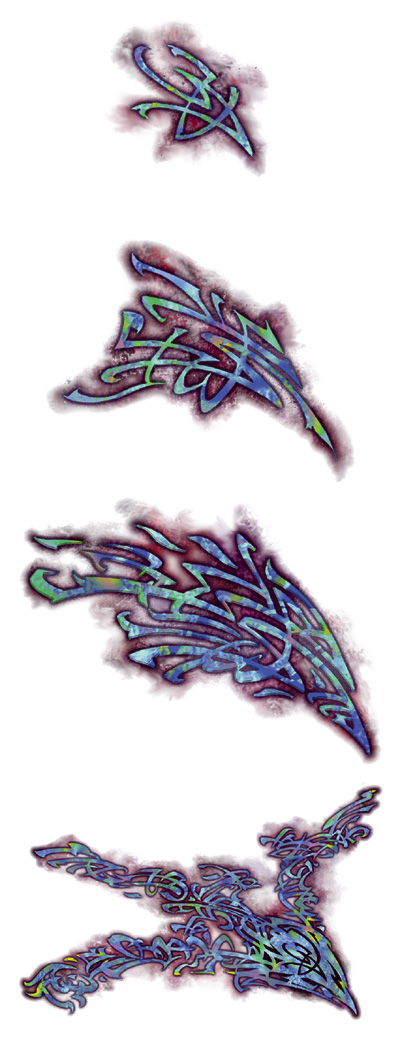
Mark of Finding
Possessed by the Half-orcs and Humans of House Tharashk. Whereas the Mark of Detection is all about seeing things for what they really are, finding is about, well, finding things and people. Identify, Locate Object, Locate Creature, and Find the Path are the abilities.
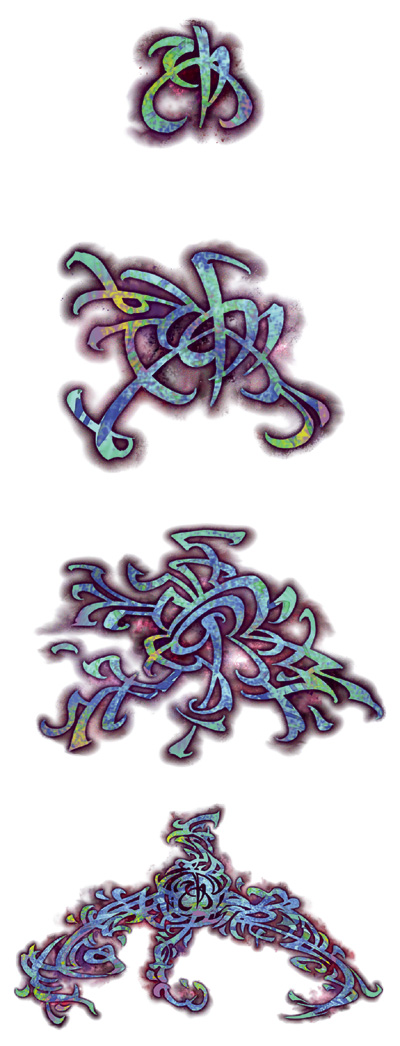
Mark of Handling
Possessed by the Humans of House Vadalis. This is all about dealing with animals in one way or another. Speak with Animals, Greater Magic Fang, Animal Growth, and Summon Natures Ally V are the spells in here, they also use the mark (somehow, they aren't telling) to make Magebred Animals, which are stronger, smarter, and faster.

Mark of Healing
Possessed by the Halflings of House Jorasco. They've cornered the magical healing market, to the point that most people seek them out before the clerics of their own church. Cure Light Wounds, Neutralize Poison, Heal, etc.
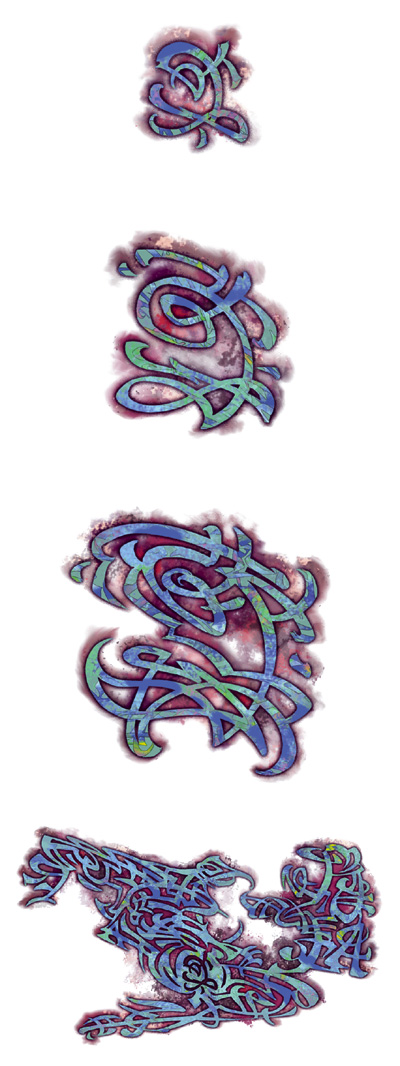
Mark of Hospitality
Possessed by the Halflings of House Ghallanda, it seemed to evolve naturally out of their original nomadic culture. Providing food and shelter while they moved along the plains, as it stands now they control the inn and dining industry. Purify Food and Drink, Create Food and Water, and Magnificent Mansion are some of the granted spells.
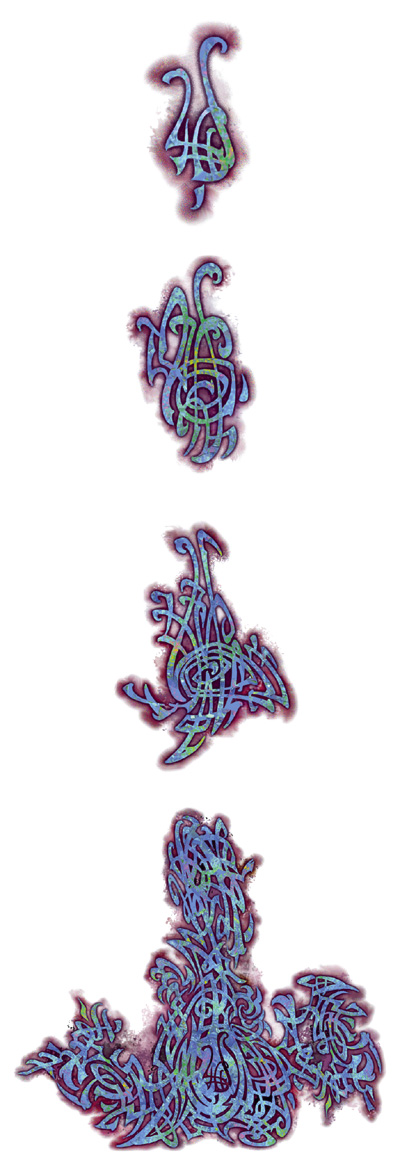
Mark of Making
Possessed by the Humans of House Cannith. They make and repair both mundane and magical items, and they control these industries with an iron fist. The Mark of Making (and by extension House Cannith) is the 'mascot' for Eberron. To the extent that Keith Baker has the Greater Mark of Making as a Tattoo. The spells they can cast involve the repair spells, Make Whole, Minor Creation, and Fabricate.
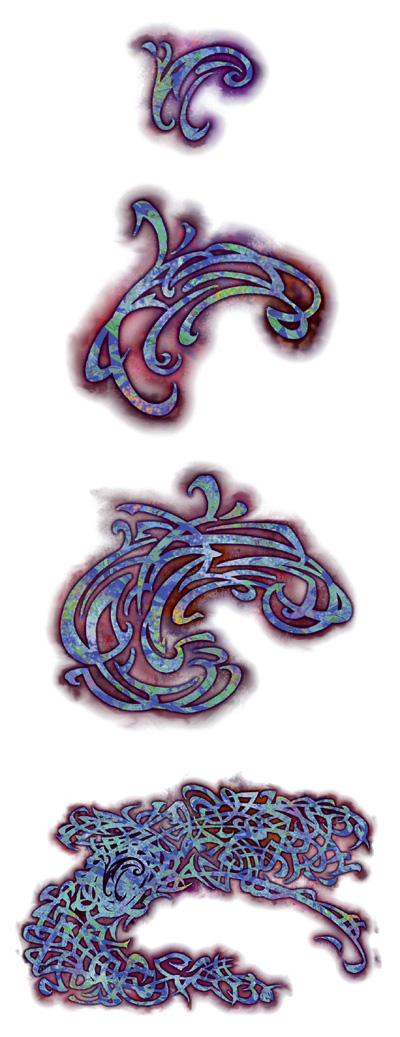
Mark of Passage
Possessed by the Humans of House Orien. They are all about terrestrial transport, they control the lightning rails and the caravans that go where the rails don't. Their spell like abilities include expeditious retreat, dimension door, and teleport.

Mark of Scribing
Possessed by the Gnomes of House Sivis. They control the magical equivalent of the telegram, as well as all translators and notaries. Transcription and legal documents all go through them. Arcane Mark, tongues, and sending are the important spells the dragonmark grants.
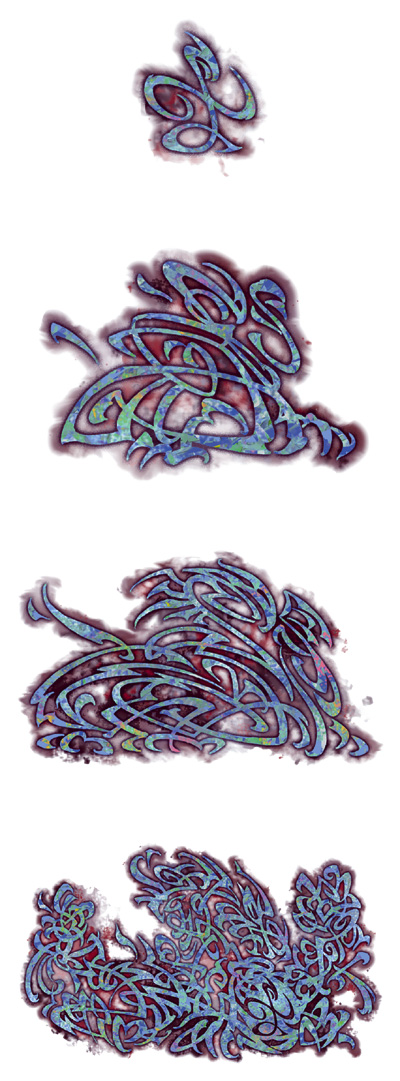
Mark of Sentinel
Possessed by the Humans of House Deneith. Deneith controls the Defenders Guild, which offers bodyguards to people of wealth and position. They also control the equivalent of fantasy PMCs, with mundane mercenary groups as well as recruited 'monster' races from Droaam. Mage Armor, shield other, protection from energy, and globe of invulnerability are some of their granted spells.
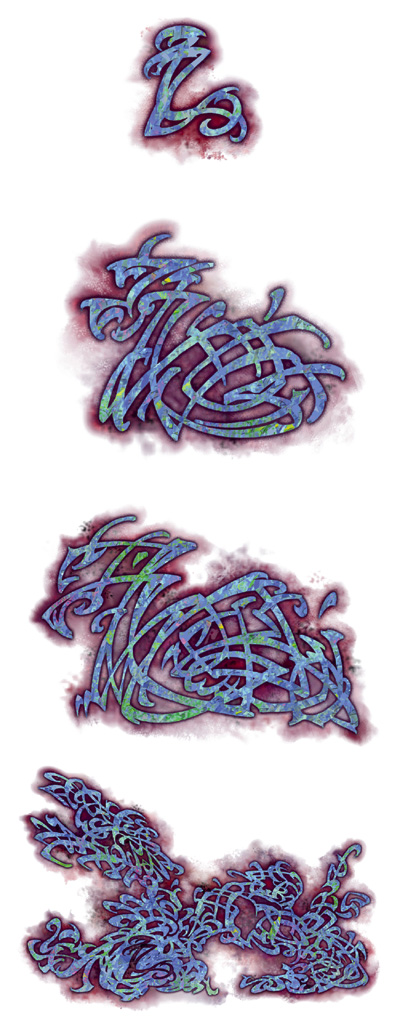
Mark of Shadow
Possessed by the Elves of House Phiarlan and Thuranni. The mark has powers of scrying and deception, forming the backbone of Khorvaire's intelligence industry. Phiarlan is more descrete about it, still operating as the Entertainers and Artisan's guild, using their illusions to actually entertain when they aren't being spies. Thuranni controls the Shadow Network, which is flat out a spy guild, but they're incorporated and everyone uses them so they get away with it. Darkness, minor image, shadow conjuration, and scrying are some of their spells.
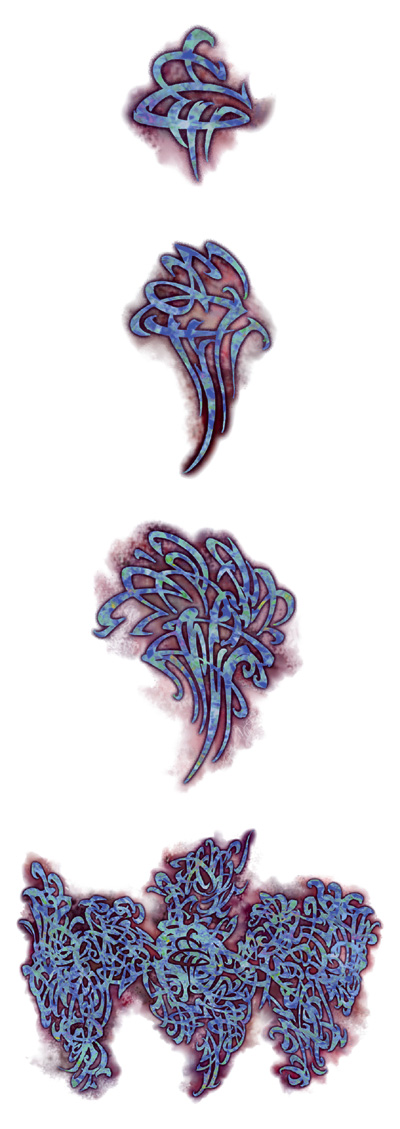
Mark of Storm
Possessed by the half-elves of House Lyrandar. They control all transportation in the sky and on the sea, they're also incredibly smug about it. They also have the weather controlling Raincallers Guild. endure elements, sleet storm, wind's favor, and wind wall are their spells.
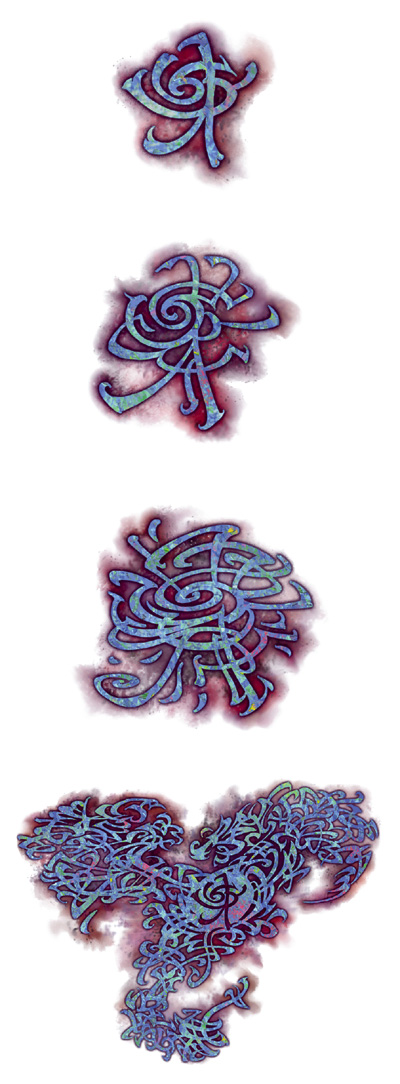
Mark of Warding
Possessed by the Dwarves of House Kundarak. The Warding Guild specializes in security for business and precious goods. They also control the banking industry. Arcane lock, explosive runes, greater glyph of warding, and faithful hound are the spells they can cast.
 Dragonmarks are very different in 4e. On top of the fact that anyone can take them, they're also much more powerful than most other feats at their level. They only have one rank now, but they give you a bonus of some kind, and the ability to master a few rituals. To put into perspective how powerful they are. the 4e ECS introduced Alchemy, which you need a feat to take and lets you make any alchemical item that's below your level. They're okay, but they don't scale granularly, they have fixed attack bonuses and damage rolls. The Mark of Making gives you the alchemist feat, at +2 level effectiveness, and you can cast the magic item creation ritual, at +2 level effectiveness, and you can master all item creation rituals. So it's a feat that gives you another feat at increased effectiveness, and most of the good parts of another feat.
Dragonmarks are very different in 4e. On top of the fact that anyone can take them, they're also much more powerful than most other feats at their level. They only have one rank now, but they give you a bonus of some kind, and the ability to master a few rituals. To put into perspective how powerful they are. the 4e ECS introduced Alchemy, which you need a feat to take and lets you make any alchemical item that's below your level. They're okay, but they don't scale granularly, they have fixed attack bonuses and damage rolls. The Mark of Making gives you the alchemist feat, at +2 level effectiveness, and you can cast the magic item creation ritual, at +2 level effectiveness, and you can master all item creation rituals. So it's a feat that gives you another feat at increased effectiveness, and most of the good parts of another feat.
Now then, there are two prestige classes that interact with Dragonmarks.
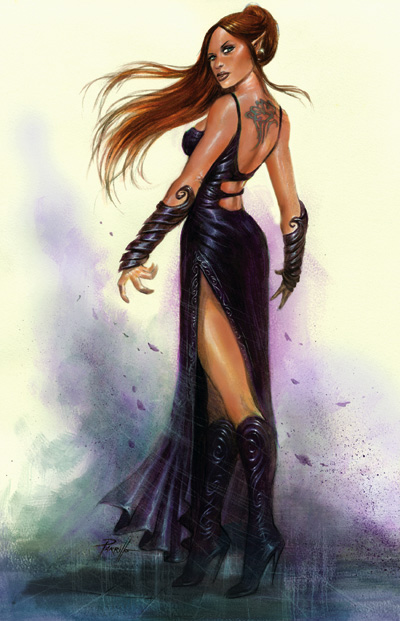
Dragonmark Heir
The Dragonmark Heir requires that you be a member of the Dragonmarked House, have that house's dragonmark, and have the "Favored in House" feat, which lets you call in favors from your house. Like tapping your uncle who owns a Galleon to transport you someplace you need to go.
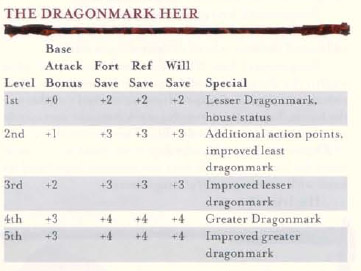
The real bonus that the class gives is free access to the lesser and greater dragonmark feats, and extra uses of the spell like abilities granted by your dragonmark.
But there's one last prestige class I haven't gone over yet.
Imagine you're just adventuring some day, being heroic, and your entire body just erupts in a giant magical tattoo.

That's the Heir of Siberys
You cannot have any dragonmarks before you enter this class, and can't take any after you do. Instead you gain a Siberys dragonmark, which ranges somewhere between "Meh" and "Can Break the Game".

The requirements are the same as the dragonmarked heir, just scaled up to a level 12 entry point, and with "heroic Spirit" swapped out for "Favored in House"(and no dragonmarks). At the point you even qualify to get a Siberys mark, you are supposed to be a certified badass, and the class features only help that out.
The Bonus Feat is restricted somewhat, to action point feats and "Favored In House", but that's not why you enter this prestige class.
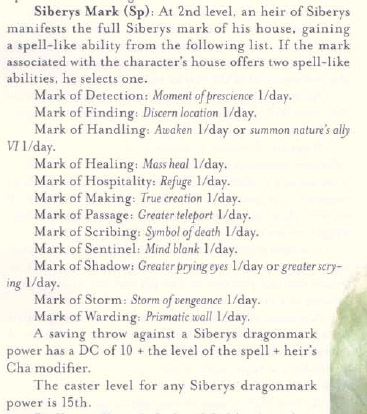
The level 3 ability lets you use your mark twice per day.
The True Creation spell you can cast through this prestige class creates 15 cubic feet of a non-magical material, with an XP Cost of that item's value in gold pieces.
There is one important thing to remember about Spell Like Abilities.
d20srd.org posted:
A spell-like ability has no verbal, somatic, or material component, nor does it require a focus or have an XP cost. The user activates it mentally. Armor never affects a spell-like ability’s use, even if the ability resembles an arcane spell with a somatic component.
Yes, this did get changed in the errata, true creation, and only true creation, keeps it's XP cost. It ruins the joke though.
Alternately, you can just go around awakening an entire forest's worth of grizzly bears to be your own personal army, you can get 60 in a month, take them out adventuring, get them levels of barbarian, or if you roll well enough on their intelligence, bear wizards.
Or if you're boring, just go drop prismatic walls on people till they fail their save.
We still haven't seen the most broken thing in Eberron.
Next Time: Monsters and this guyyyAAAUUGGH

